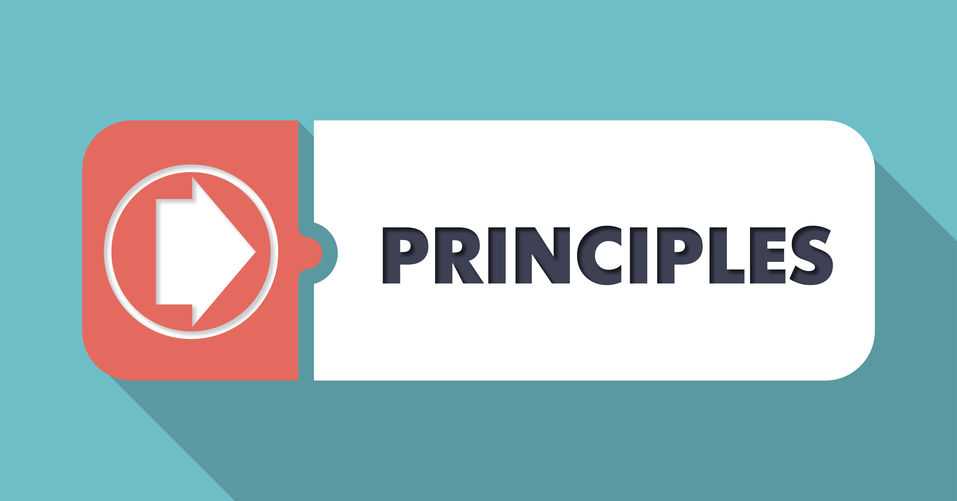
The essence of marketing is communication. This requires content developers to understand the minds and behaviors of their target audiences. With knowledge of interactive trends, social phenomena and human nature, marketers can achieve two goals. The first is to recognize why buyers make the decisions they do. The second goal is determining the best ways to give buyers what they are looking for when they need it. The bottom line is that every purchase represents a decision or multiple decisions. When marketers understand the psychological principles that facilitate decision-making, they create effective content marketing messaging that drives results.
Psychological Principles

- Mere-Exposure Effect is a psychological phenomenon by which people tend to develop a preference for things merely because they are familiar with them. In social psychology, this effect is sometimes called the “familiarity principle.” In marketing, familiarity with a brand and a company’s value proposition is vital to converting prospects to customers. For example, The Marketing Rule of 7 states that a prospect needs to “hear” the advertiser’s message at least seven times before they’ll take action to buy that product or service. A consistent and varied distribution of valuable content, messaging or advertising on the platforms that your target audiences use most frequently will ensure your audiences are familiar with your brand when the time comes to make a purchasing decision.
- Information-Gap Theory, as defined by Crowdspring, suggests that “when someone has a gap in their knowledge on a topic they care about, they will take action to find out what they want to know.” This behavior is fueled by natural human curiosity. It’s an essential component of content marketing to provide value to your audiences that showcases expertise, addresses known challenges and represents your company’s position as a thought leader. Use the Information-Gap Theory to determine the solutions and information your prospects are looking for and create content that tackles those topics.
- Frequency Illusion/Baader-Meinhof Phenomenon is a cognitive bias in which, after noticing something for the first time, there is a tendency to notice it more often, leading someone to believe that it has a high frequency. If you’re trying to create attention, develop multiple pieces focused on that specific message from different angles and distribute them through a number of different communication channels. This allows you to manufacture your own kind of frequency illusion that will keep prospects aware of your brand without being overly repetitive and self-promotional.
- Surprise and Delight Phenomenon is a behavior-driven marketing strategy that aims to associate positive emotions with your customer’s experience, in turn, strengthening your customer relationship. The goal is to create an extraordinary experience that exceeds buyers’ expectations. By igniting emotions such as excitement and joy, customers are more likely to become advocates of your products, services and brand. Tactics to surprise and delight your customers include exclusive offers, perks and rewards, personalized gifts or notes and content that is entertaining or celebrates successes.
- Scarcity Principle exists in economics and social psychology. Simply put, it refers to human nature and the consequent behavior that places a higher value on objects that are less accessible or rare, and a lower value on those that are in abundance. Whether it’s a sold-out product, an exclusive event or a service provided by a professional in high demand, scarcity increases desire. To tap into this principle, create limited-time offers, promotional products or content, or exclusive experiences, seminars, webinars and events.
- Norm of Reciprocity is a social standard or expectation in modern society. The concept is to repay (in-kind) what another has done for us. Fueled by gratitude and goodwill, reciprocity is a social construct that appeals to many. In marketing and business, reciprocity exists in buyer-seller relationships and other joint venture arrangements. They take many forms including an exchange of services, co-op relationships, referrals and other mutually supportive programs.
- Social Proof and Group Mentality are two closely tied psychological phenomena that rely on the relationships of individuals with each other. Social proof, as defined by digital marketers CXL, states that people will conform in order to be liked by, similar to, or accepted by another individual, influencer or by society as a whole. Group (or herd) mentality is a similar phenomenon where members of a group conform with each other and through shared values and goals adopt similar behaviors. In marketing, this concept is seen when brands engage with groups through digital outlets such as social media, forums and webinars, or physical outlets such as events, conferences and trade shows.
- The Nudge Theory is defined as “positive reinforcement and indirect suggestions as ways to influence the behavior and decision making of groups or individuals.” This strategy relies on astute placement and timing to reinforce prospects’ momentum. The gentle nudge approach guides prospects to your company’s content by launching them from other related products, services or events. Examples include strategically placed call-to-action buttons or suggested articles on relevant content and advertising on platforms with related products or services. A nudge can provide suggestions of what other converted users did or clicked next to streamline the customer journey.
Armed with Understanding

For many years, marketers have used psychological theories to influence their audiences. From color choice to streamlining the customer experience, buyer and behavioral psychology help marketers anticipate and even influence buyer behavior. Create a competitive advantage by providing audiences with valuable content that speaks to their (often unconscious) wants, needs and challenges. Armed with an understanding of psychological principles and theories, marketers can uncover vast insights into the minds of their target audiences and better grasp the universal motives that capture human nature and drive behavior. As you evaluate your company’s content marketing strategies, look for opportunities to leverage these psychological principles and see how a new understanding of your target audiences will impact your success.
